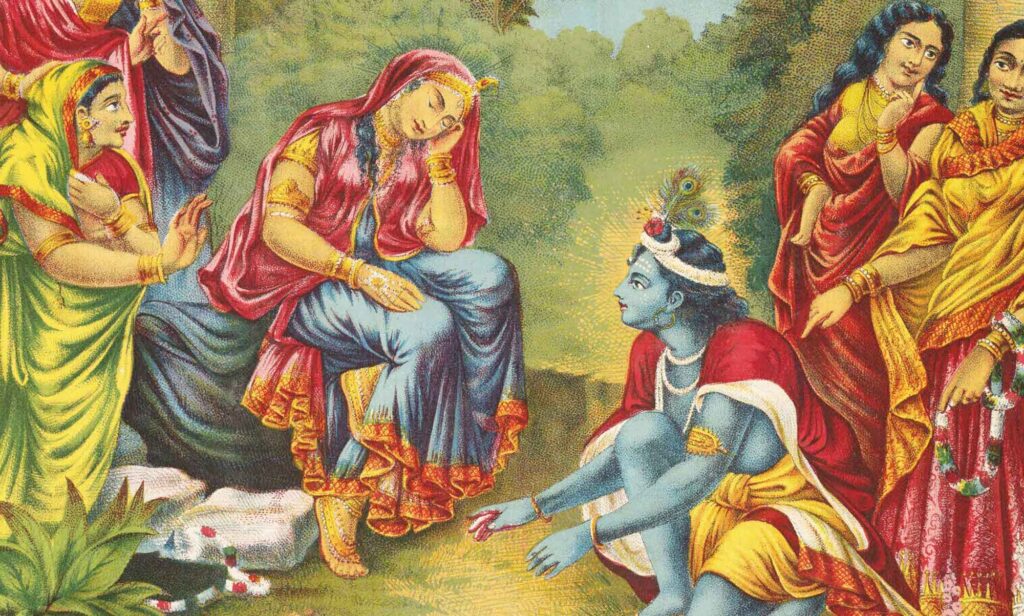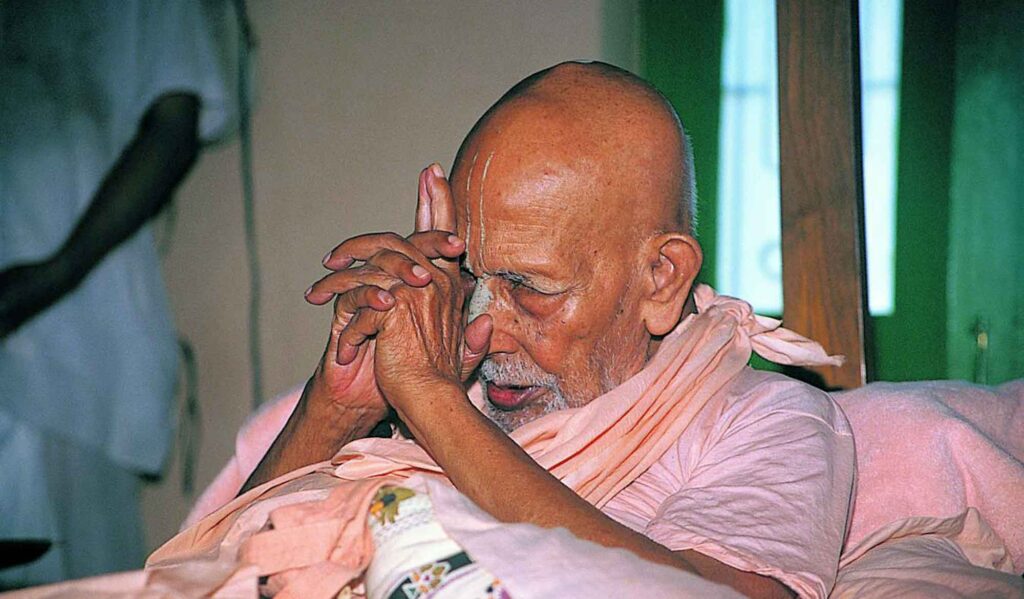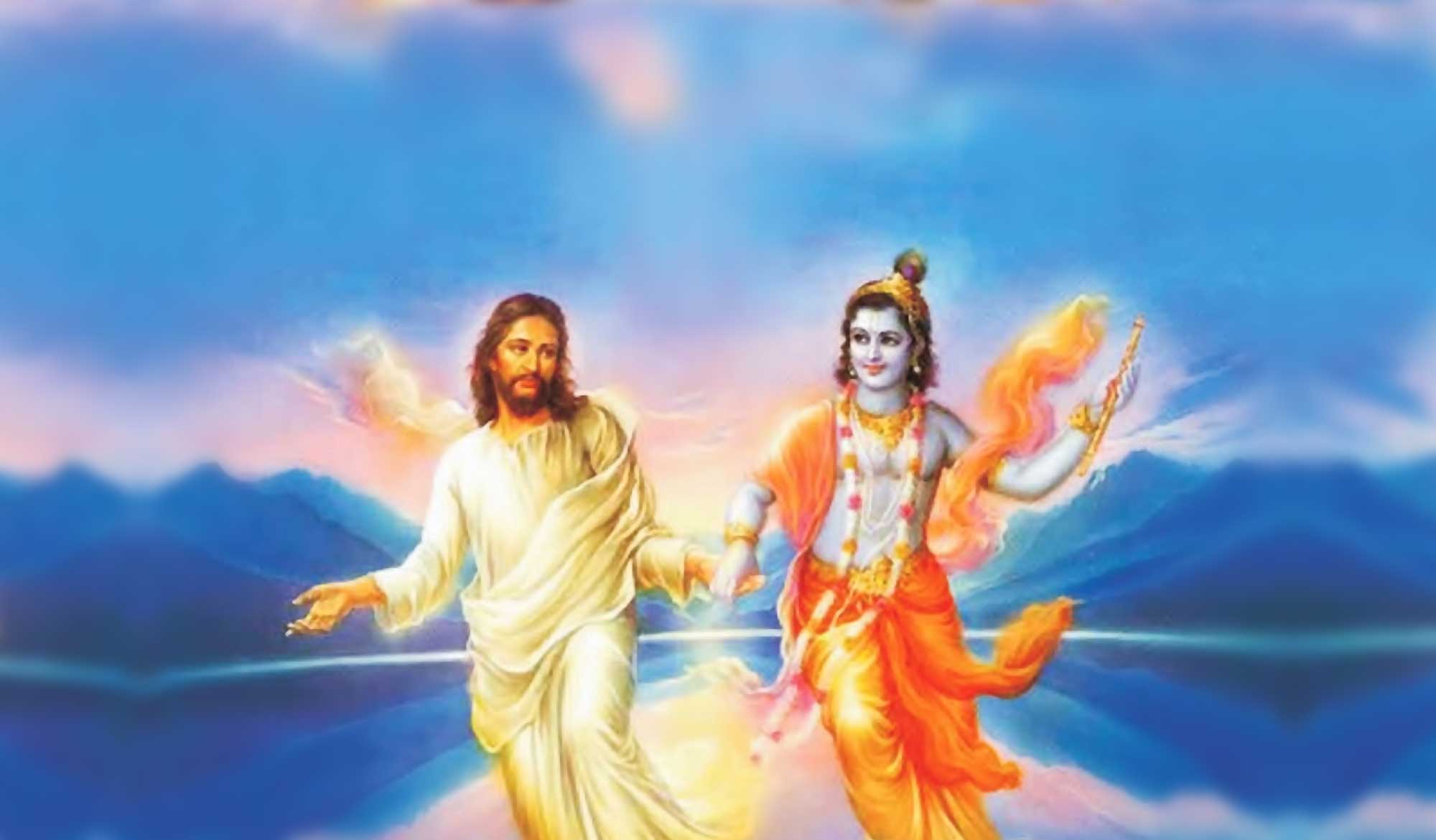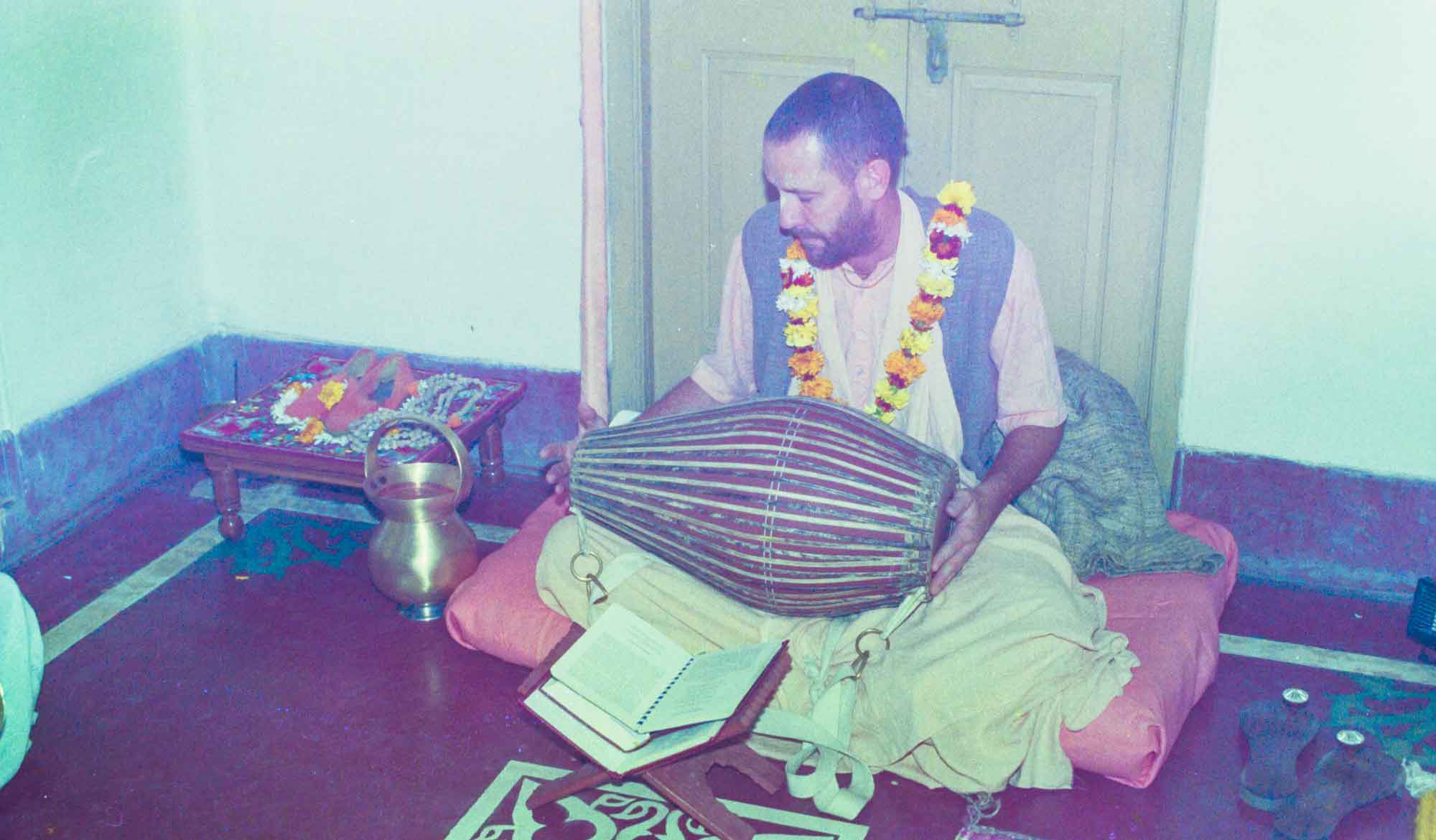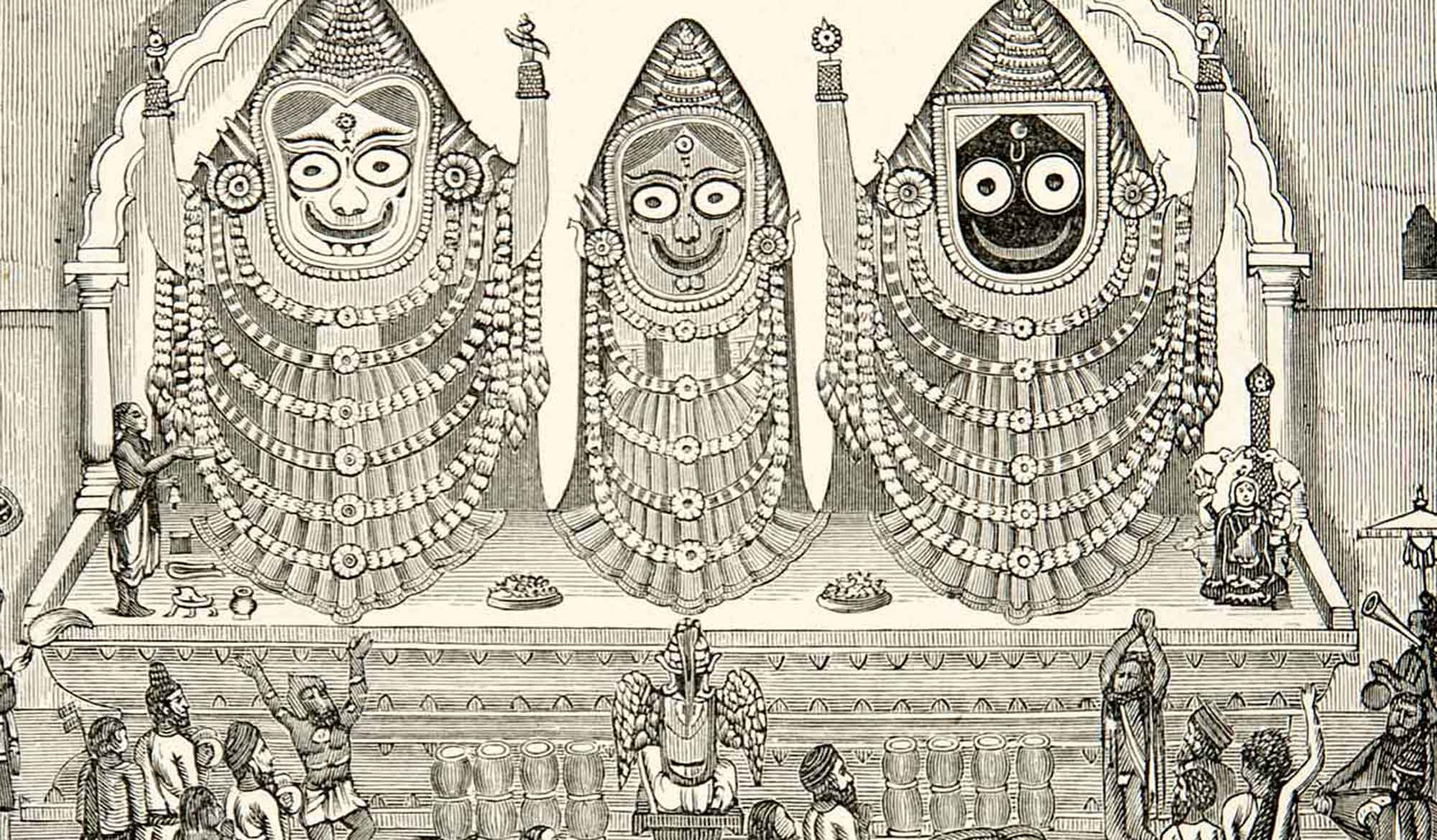by Swami B.G. Narasingha
"The Greatness of the Gauḍīya Line" is an article written by Śrīla Narasiṅgha Mahārāja in 1998 wherein Mahārāja specifically discusses the importance of rasa-tattva, and how the Gauḍīyas are different to other Vaiṣṇava schools of thought.
Question: What makes our philosophy so great, compared to other Vaiṣṇava philosophies? (H.Krishna Susarla)
Swami B.G. Narasiṅgha: It is “so great” because it is the philosophy of divine love and it comes from the greater region of the infinite.
golokera prema-dhana, hari-nāma-saṅkīrtana
“The treasure of divine love has descended from the spiritual world of Goloka Vṛndāvana, appearing in this world as the saṅkīrtana movement of the chanting of Lord Hari’s holy names.” (Narottama Dāsa Ṭhākura, Iṣṭa-deve Vijñapti 2, from Prārthanā)
That which comes from the highest plane of the infinite must have inherent in it all that is sacred and characteristic of that highest domain.
Philosophical comparison with other Vaiṣṇava sampradāyas will ultimately bring us to analyze rasa. Via the comparison of rasa, the plane of Kṛṣṇa consciousness is seen as above that of Nārāyaṇa and the Vaikuṇṭha sampradāyas.
On the basis of rasa, Kṛṣṇa is superior to Nārāyaṇa.
siddhāntatas-tv abhede pi śrīsa-kṛṣṇa-svarūpayoḥ
rasenotkṛṣyate kṛṣṇa-rūpam eṣā rasa-sthitih
“Although Nārāyaṇa and Śrī Kṛṣṇa are one and the same, on the basis of the fact that Śrī Kṛṣṇa exhibits the super excellence of conjugal mellow, He is considered superior. In Him alone do all rasas find their final and absolute expression.” (Bhakti-rasāmṛta-sindhu, Pūrva–vibhāga, 2.59)
Rasa, rati, prema, divine love has been declared by Śrī Caitanya Mahāprabhu as the fifth goal of life, prema pumārtho mahān – pure love of Godhead is the ultimate goal of life for all men.
That prema is also not without its characteristics and the analysis of the character of love shows us that the residents of Goloka Vṛndāvana have a higher, more selfless, sweeter type of love for Kṛṣṇa than the residents of Vaikuṇṭha have for Lord Nārāyaṇa.
In the Vṛndāvana conception of Mahāprabhu we see that there are gradations of love according to rasa – śānta–prema, dāsya–prema, sakhya–prema, vātsalya–prema, and mādhurya–prema. The chief rasa is mādhurya-prema, the sweetest rasa, which is sometimes called mukhya-rasa because all the characteristics of the other rasas are found in mādhurya-rasa.
In mādhurya-rasa there is also gradation; svakīya and parakīya–bhāva. Parakīya–bhāva, the relationship of paramour love, has been given the superior position in the estimation of our ācāryas like Śrī Jīva and Viśvanātha.
In parakīya–bhāva there is also gradation and the ultimate position is held without question by Śrīmatī Rādhārāṇī whose essential nature is, mahā–bhāva. This is the conclusion of Śrī Rūpa Gosvāmī and the members of the Gauḍīya sampradāya.
Śrī Caitanya Mahāprabhu is Rasa-rāja Mahā-bhāva, that is Śrī Kṛṣṇa and Śrīmatī Rādhārāṇī appearing in one form. The nāma-saṅkīrtana of Goloka was brought to the world by Him and thus we must also consider that the kṛṣṇa–nāma of the Gauḍīya kīrtana is also categorically higher than the kīrtana of the Vaikuṇṭha sampradāyas.
In the Kali-Santaraṇa Upaniṣad we find this mantra;
hare rāma hare rāma rāma rāma hare hare
hare kṛṣṇa hare kṛṣṇa kṛṣṇa kṛṣṇa hare hare
iti ṣoḍaśakaṁ nāmnāṁ kali-kalmaṣa-nāśanaṁ
nātaḥ parataropāyaḥ sarva-vedeṣu dṛśyate
“The sixteen-word mantra is especially meant for counteracting the sins of the age of Kali. To save oneself from the contamination of this age there is no alternative but to chant this mantra. After searching through all the Vedic literature one cannot find a method of religion for this age so sublime as this.”
(Note: Only the Gauḍīya sampradāya editions of the Kali-Santaraṇa Upaniṣad. publish the mantra as Hare Kṛṣṇa first. Also most all the other sampradāyas publish the mantra as Hare Rāma and Hare Kṛṣṇa. Hare, as published by the Gauḍīyas means Rādhārāṇī – this is exclusive to the followers of Mahāprabhu.)
This above mantra is vaikuṇṭha-nāma (Hare Rāma) and the superior position is generally given to Rāma by the Vaikuṇṭha sampradāyas. However, Śrī Caitanya Mahāprabhu and His Vṛndāvana sampradāya are given to first chant Hare Kṛṣṇa. It is also a fact that the Gauḍīya conception of Rāma is, rāma as in ramaṇa, or Rādha-Ramaṇa and that hare means hara or Śrīmatī Rādhārāṇī.
(Amongst other scholars of the Veda, hara means Lord Siva and Hari-Hara means the combined form of Viṣṇu and Śiva. As far as we are concerned, Hari-Hara means the combined form of Rādhā-Kṛṣṇa i.e., Mahāprabhu)
Thus there is conceptual differences in the mantra between the Vaiṣṇava sampradāyas. Depending on one’s conception of the mantra, the mantra will carry one to that plane of reality. Similarly, depending on one’s conception of the mantra that one has received at the time of dīkṣā, one will thus be able to understand the śāstra accordingly. This also means that if one does not have proper connection with a bona-fide sampradāya the mantra and ones studies of the śāstra will not yield fruit, phalam.
sampradāya-vihīnā ye mantrāś te niṣphala matāḥ
“If one is not actually connected with a bona fide disciplic succession, whatever mantras he chants will not bring the desired results.” (Padma Purāṇa)
The essential element to understand higher and lower, who is the ultimate Svayam-Bhagavān and who is not, ultimately depends on guru-kṛpā, the mercy of the guru. The guru takes one beyond jnana to pure devotion.
evaṁ gurūpāsanayaika-bhaktyā
vidyā-kuṭhārena śitena dhīraḥ
vivṛścya jīvāśayam apramattaḥ
sampadya cātmānam atha tyajāstram
“With steady intelligence you should develop unalloyed devotional service and careful worship of the spiritual master, and with the sharp axe of transcendental knowledge you should cut off the subtle material coverings of the soul. Upon realizing the Supreme Personality of Godhead, you should then give up the axe of analytic knowledge.” (Bhāg. 11.12.24)
The Gauḍīya siddhānta is ‘greater’ than that of the other Vaiṣṇava sampradāyas essentially because it has come down to take us up to a higher plane of reality, ‘Beyond Vaikuṇṭha.’
Epilogue by Śrīla Prabhupada, A.C. Bhaktivedānta Swami
“Golokera prema-dhana. This is descended from the spiritual platform, Goloka Vṛndāvana. Hari-nāma-saṅkīrtana, this Hare Kṛṣṇa. Rati nā janmilo mora tāya – I have no attachment for these things. I have got attachment for radio sound, or television sound, so many sound, but I have no attachment for the supreme sound which is coming down from the Goloka Vṛndāvana. Golokera prema-dhana, hari-nāma saṅkīrtana, rati nā janmilo mora… viṣaya viṣānale, dibā niśi hiyā jvale. In this material world, I am, my heart is always burning on account of so many miseries. Taribare nā koinu upāya. But I could not find out the way how to get out of it. This sound vibration will get you out from the blazing fire of this material condition. This sound, harer nāma harer nāma harer nāma eva kevalam. Chant always, everything will be perfectly done. Yes. Go on.”
More Articles by Swami B.G. Narasingha
The Aquarian Gospel of Jesus Christ
The article, “The Aquarian Gospel of Jesus Christ” was written by Śrīla Narasiṅgha Mahārāja under the pseudonym of ‘Pradeep Sharma’ in 2007. This article was in response to various parties begging the question about Jesus being a devotee of Kṛṣṇa and citing a dubious work called the ‘Aquarian Gospel’ as evidence.
Meditation Techniques and the Holy Name
'Meditation Techniques and the Holy Name' was written by Swami Narasingha in October 2006. Narasingha Maharaja discusses the age-old problem of distraction during japa, and gives advice based upon Sanātana Gosvāmī and Bhaktivinoda Ṭhākura on how to combat this.
The Burning Cross – Part 2
In ‘The Burning Cross - Part 2’, Śrīla Narasiṅgha Mahārāja, under the pen name of Pradeep Sharma, discusses the Goan Inquisition, how the Christians viewed Lord Jagannātha in Purī, and the thoughts of the Founding Fathers of the Unites States about Christianity.

